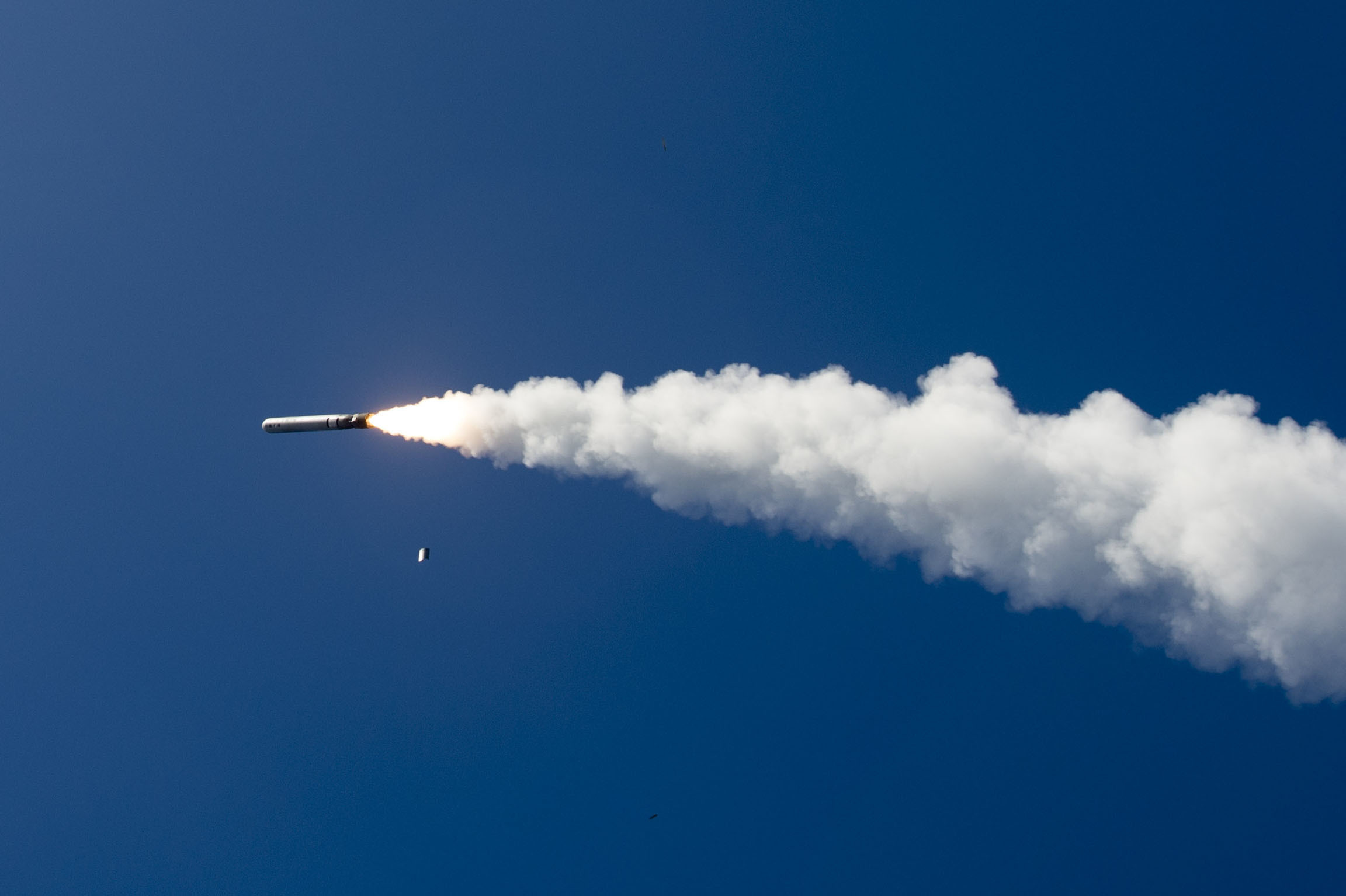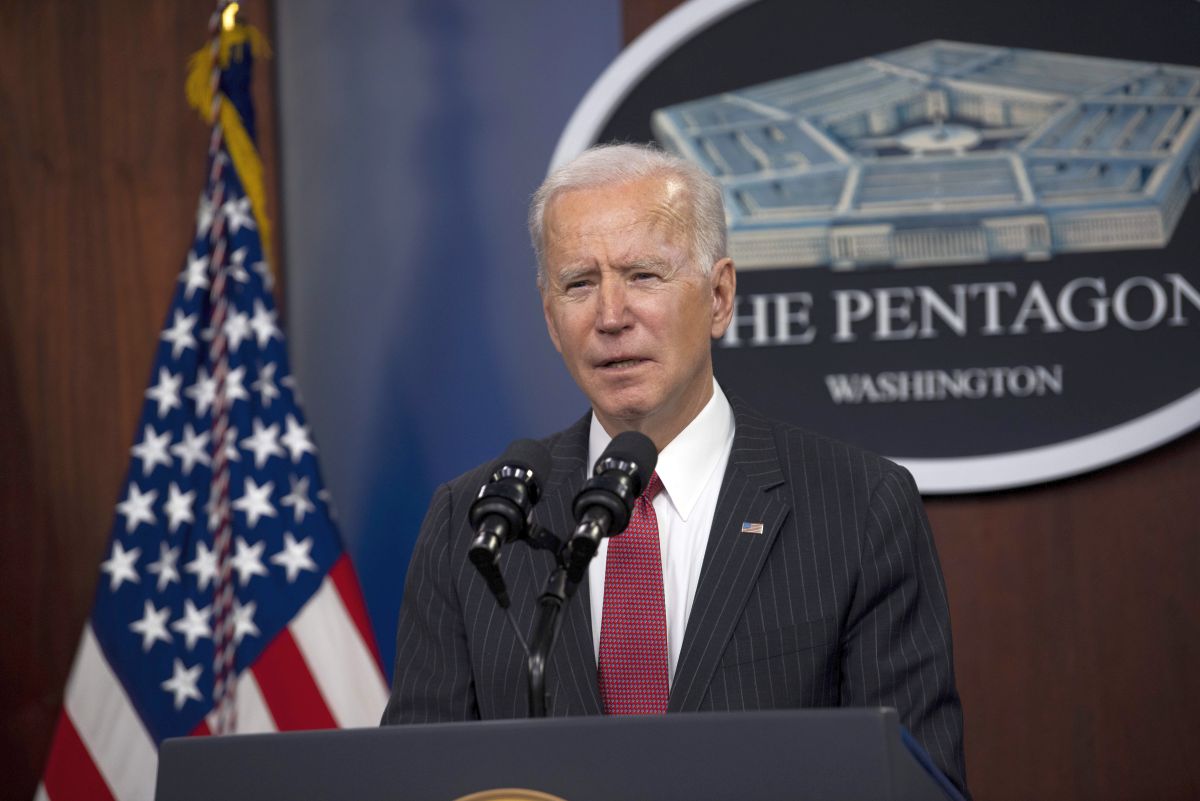Extended Nuclear Deterrence Capabilities Under Debate in the U.S.
The U.S. Congress will likely reverse President Joe Biden’s decision to discontinue the development of a sea-launched nuclear cruise missile. While the U.S. is already planning to substantially enhance other capabilities to deter a nuclear attack on the allies, this missile could provide an additional hedge in an uncertain security environment in which the threat from Russia may grow further still. While the capability might strengthen deterrence of Russia, it would not replace NATO’s current nuclear capabilities in Europe as a means to demonstrate the resilience of the whole Alliance to nuclear threats.
 COVER Images/ Zuma Press/ FORUM
COVER Images/ Zuma Press/ FORUM
The Biden administration is continuing the comprehensive modernisation of U.S. nuclear forces, started under President Barack Obama. It wants, however, to discontinue the development of an additional nuclear delivery system, the Sea-Launched Cruise Missile-Nuclear (SLCM-N), launched by the Trump administration. Biden’s decision is opposed by Republicans and some members of the Democratic Party (which controls Congress). Three out of four committees working on the 2023 defence budget adopted draft bills that fund the SLCM-N, and one of them has passed the House of Representatives. Final votes on the budget will take place in the coming months.
Dispute over the SLCM-N
The Trump administration wanted to introduce the SLCM-N into service on multipurpose submarines and possibly also on ships by around 2030. It would be a non-strategic missile with a regional range and a relatively low-yield warhead. The SLCM‑N was supposed to strengthen deterrence of Russia and China by broadening the options to respond to limited nuclear attacks in Europe and Asia. It was also described as a bargaining chip in negotiations with Russia on limitation of its much bigger arsenal of non-strategic nuclear weapons. The U.S. eliminated most of its own after the fall of the Soviet Union mainly because they were no longer needed to balance the quantitative advantage of the conventional forces of the communist bloc. The predecessor of the SLCM‑N, TLAM-N, was moved into reserve at the beginning of the 1990s. Some allies considered the ability to redeploy it in the Pacific as important for deterrence, but TLAM-N was retired in 2013 by the Obama administration.
The Biden administration argues (as did the Obama administration in the case of the TLAM-N) that the SLCM-N would be redundant since the U.S. already possesses and is modernising other systems sufficient for deterrence of limited nuclear attacks. It also argues that continuation of this programme would impede more important investments in nuclear forces. According to preliminary estimates by the Congressional Budget Office for 2021-2030, development and production of the SLCM-N and its warhead would cost around $10 billion (out of $188 billion for all investments in warheads and new delivery vehicles in this period). Moreover, cancellation of the SLCM-N is in line with the Biden administration’s desire to demonstrate that it is making efforts to reduce the role of nuclear weapons in U.S. security policy. This is to help induce other countries to cooperation in countering nuclear proliferation. Some Democrats have also criticised low-yield nuclear weapons as increasing the risk of nuclear escalation of conflicts as too “usable”.
Several key U.S. military leaders have publicly backed the restoration of SLCM-N funding, including the Chairman of the Joint Chiefs of Staff Gen. Mark Milley and outgoing Commander of the U.S. European Command Tod Wolters. The chief advocate for the SLCM-N is Adm. Charles Richard, who commands U.S. nuclear operations. Richard claims that the SLCM-N would fill a “deterrence and assurance gap”, which he says is demonstrated by the Russian nuclear threats during the invasion of Ukraine and rapid expansion of Chinese nuclear forces. In turn, Chief of Naval Operations Adm. Michael Gilday is sceptical of the value of the SLCM-N and warned that the deployment of a nuclear missile on multipurpose vessels would impede their other missions (for this reason, the U.S. Navy supported the withdrawal of the TLAM-N).
U.S. Options for Limited Nuclear Counterattack
The U.S. has several hundred nuclear warheads with yields of 10 kilotons or less (the atomic bombs used against Japan in 1945 had a yield of 15-20 kilotons each, but most of the current U.S. nuclear weapons have yields from 90 to more than 400 kilotons). Selective use of low-yield nuclear weapons is supposed to minimise collateral damage (especially among civilians) and the risk that the enemy would consider such strikes as escalation and respond with massive nuclear retaliation against the U.S. Such U.S. capabilities include mostly air-launched cruise missiles and B61 bombs. A new cruise missile, the Long Range Standoff Weapon (LRSO), is to be available for B-52H bombers and new B-21s around 2030. The B-21 bomber is scheduled to come into service in 2026 and will also be able to carry nuclear bombs, which are now being modernised. Currently, these bombs are assigned to B-2A bombers and tactical aircraft operated by the U.S. and several NATO members (according to SIPRI estimates, around 100 B61 bombs are deployed in Europe). The tactical aircraft will be replaced in the coming years by F-35A fighters. Moreover, the Trump administration lowered the yield on a small number of W76‑2 warheads on submarine-launched intercontinental-range Trident missiles. This was to ensure that, despite advances in air defence capabilities by potential adversaries, the U.S. would be able to conduct a limited nuclear counterattack before the F-35, B-21, and LRSO enter service. These new planes and air-launched missiles will have lowered detectability by radar due to their stealth features (currently only the B-2 is stealthy).
The Trump administration presented SLCM-N as a hedge in case of a growing threat from air defences to even new aircraft and as a faster response option. Deployed on submarines, which are difficult to detect, SLCM-N could be closer to enemy territory for longer, which would increase the ability for covert strikes deep into that territory and against mobile targets. While Trident missiles are much faster and have a longer range, some have voiced concerns that missile defence systems may over time become capable of intercepting one or a few W76-2 warheads. Moreover, some commentators argued that the launch of one or a few Trident missiles would carry a heightened risk of escalation because it would be visible to Russian early warning systems and could be mistakenly perceived as the beginning of a much larger attack. The Trump administration publicly downplayed such risk. It rather stressed that the presence of SLCM-N on submarines and ships in Asia and Europe would signal U.S. resolve to respond to a nuclear attack against allies. Such deployments would not require basing on allied territory, which is very controversial in some allied countries. These advantages of SLCM-N have been underscored especially with regard to Asia where the U.S. has no nuclear warheads.
Conclusions for NATO
U.S. modernisation plans envisage substantial enhancement of options of response to limited nuclear attacks, especially through procurement of the B-21 bomber with LRSO missiles. Their capabilities, resulting from the combination of long range and stealth of both systems, would largely overlap with the capabilities of the SLCM-N. This latter missile would additionally demonstrate U.S. resolve in defending allies, increase the ability to hold certain targets at risk and provide a hedge in case of weakening effectiveness of other systems. Deployment of the SLCM-N could thus strengthen deterrence and is in NATO’s interest, although it is not clear whether and how much these attributes would influence Russian calculations. Currently, Russia appears to perceive U.S. capabilities and resolve to defend its allies as credible, which seems to be proven by the lack of military retaliation for supporting Ukraine against NATO. At the same time, the invasion of Ukraine has highlighted Russia’s growing readiness to take risks.
The SLCM-N, if it enters into service, will not replace U.S. nuclear bombs in Europe and aircraft assigned to carry them, especially in signalling the resilience of the whole of NATO to nuclear threats. This unique role stems from the participation of U.S. allies in providing these capabilities and planning their use. Their political value depends, however, on their military effectiveness. The effectiveness will increase with the introduction of F-35A fighters, although their capabilities will be inferior to the B-21 bombers, LRSO missiles, and a hypothetical SLCM-N (in terms of range, the degree of reduced detectability, and due to the vulnerability to destruction at air bases in Europe). NATO should further increase the survivability of these aircraft on the ground and in the air, including by considering an increase in the number of countries that provide aircraft for delivery of nuclear bombs.





